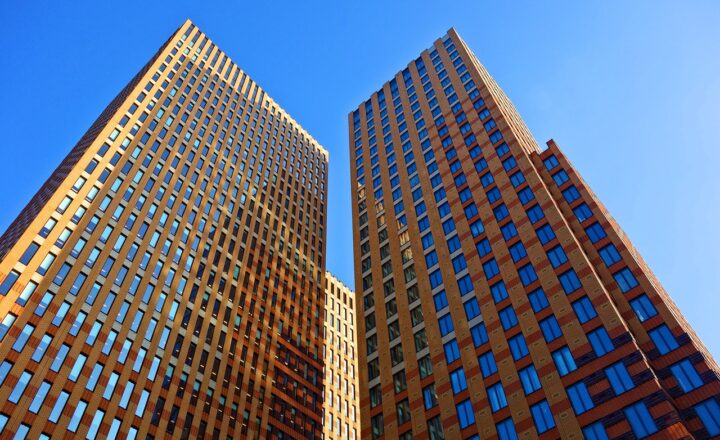The Stories of the World’s Most Influential Architects and Their Masterpieces
November 16, 2024

Architecture is a blend of art and science, where creativity meets functionality. Throughout history, there have been architects whose innovative designs have not only changed city skylines but have also reshaped how we think about living spaces. This article delves into the lives and masterpieces of some of the world’s most influential architects, exploring their philosophies, challenges, and contributions to the field.
1. Frank Lloyd Wright: The Pioneer of Organic Architecture
Frank Lloyd Wright is often regarded as one of the greatest American architects of all time. His philosophy of organic architecture emphasized harmony between human habitation and the natural world, creating structures that blend seamlessly with their environment. One of his most famous works, **Fallingwater**, exemplifies this idea. Built in 1935 over a waterfall in Pennsylvania, the house features cantilevered terraces that integrate into the natural landscape.
Wright’s innovative use of materials and open floor plans challenged traditional architectural styles. His **Prairie School** designs, characterized by low, horizontal lines and flat roofs, were revolutionary at the time. Today, Wright’s impact on architecture can be seen in countless modern homes, making his work timeless and influential.
2. Le Corbusier: The Father of Modern Architecture
Swiss-French architect **Le Corbusier** (1887-1965) laid the groundwork for modern architecture with his philosophy that emphasized functionality and the use of industrial materials. He famously stated, “A house is a machine for living in,” which encapsulates his vision for design.
His most significant work, **Villa Savoye**, is a manifesto of modernist principles. Completed in 1929, the villa showcases an open floor plan, a flat roof terrace, and free façade design, allowing natural light to permeate each room. The design gained worldwide recognition and has influenced many architects since its inception.
In addition to residential buildings, Le Corbusier was also known for his urban planning concepts, suggesting that cities should be designed to accommodate the modernist lifestyle. His ideas about modular systems and standardization have shaped contemporary architecture and urbanism.
3. Zaha Hadid: The Queen of the Curve
**Zaha Hadid** (1950-2016) was a trailblazer in architecture, known for her futuristic designs and curvilinear forms that challenged conventional notions of space. As the first woman to receive the Pritzker Architecture Prize, Hadid broke barriers in an industry predominantly run by men.
Her masterpiece, the **Heydar Aliyev Center** in Baku, Azerbaijan, is celebrated for its fluid form and innovative use of space. The building, completed in 2012, features a dynamic exterior that eschews sharp angles, creating a seamless, flowing appearance. Hadid’s work often evokes movement and fluidity, inviting visitors to experience architecture differently.
She also made significant contributions to urban design and furniture, showcasing how architecture affects everyday life. Zaha Hadid’s unique style has inspired generations of architects, cementing her legacy as one of the most influential figures in modern architecture.
4. I.M. Pei: The Master of Modernism
**I.M. Pei** (1917-2019) was known for combining traditional architectural elements with modernist design. His work often explored the relationship between nature and the built environment. Pei gained international acclaim for his innovative designs, such as the **Louvre Pyramid** in Paris, which redefined the entrance to one of the world’s most famous museums.
Completed in 1989, the glass and steel pyramid serves as a striking contrast to the classical architecture of the Louvre, illustrating Pei’s ability to harmonize different styles and eras. His design philosophy emphasized light, space, and purity of form, which became defining characteristics of modern architecture.
Pei’s influence extends beyond individual buildings; his approach to urban planning and landscape design has shaped cityscapes globally. His achievements have inspired countless architects to think beyond the conventional, challenging norms through innovative designs.
5. Louis Kahn: The Poet of Light
Known for his monumental buildings and use of light, **Louis Kahn** (1901-1974) focused on creating spaces that evoke emotion and spirituality. Kahn’s designs often feature geometric forms and materials that create a dialogue with natural light, contributing to the overall ambiance of the structures.
One of his most iconic works, the **Salk Institute** in California, symbolizes his architectural ethos. Built in 1965 for research into the biological sciences, the institute features a stunning courtyard that frames views of the Pacific Ocean, emphasizing the importance of light and nature in human experience.
Kahn’s approach to architecture—where spaces inform one another and each room pays homage to natural light—has influenced a multitude of architects, especially in educational and civic design projects.
6. Norman Foster: Sustainable Design Visionary
**Norman Foster** (born 1935) has established himself as a leader in sustainable design and high-tech architecture. His firm, Foster + Partners, is known for iconic projects that prioritize environmental sustainability without compromising aesthetic appeal. Notable works include the **Reichstag Building** renovation in Berlin and the **30 St Mary Axe** (affectionately known as the “Gherkin”) in London.
The Gherkin, completed in 2003, is celebrated for its innovative energy-efficient design that reduces carbon emissions. Foster’s emphasis on natural ventilation and environmentally friendly materials showcases the potential of architecture to address pressing global issues.
By harnessing advanced technology and sustainable practices, Foster has influenced modern architecture while advocating for ecological responsibility. His work continues to remind us that the built environment should coexist harmoniously with nature, shaping the future of architecture for generations to come.
Conclusion
The stories of these influential architects reveal how their unique visions and innovative designs have transformed the field of architecture. From Frank Lloyd Wright’s organic principles to Zaha Hadid’s fluid forms, each architect has contributed to a richer, more diverse built environment. By studying their masterpieces, we not only appreciate their extraordinary artistry but also understand the historical and cultural contexts that shaped their work. The legacies of these architects remind us of the power of design to influence human experience, environment, and society at large. As we move forward, their stories continue to inspire new generations of architects to explore, innovate, and ultimately shape the world around us.







